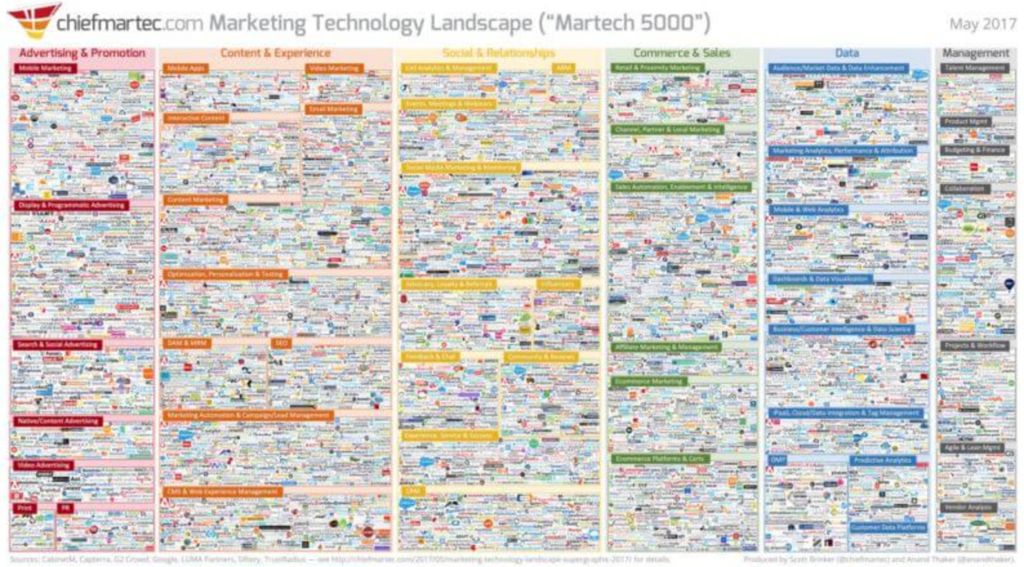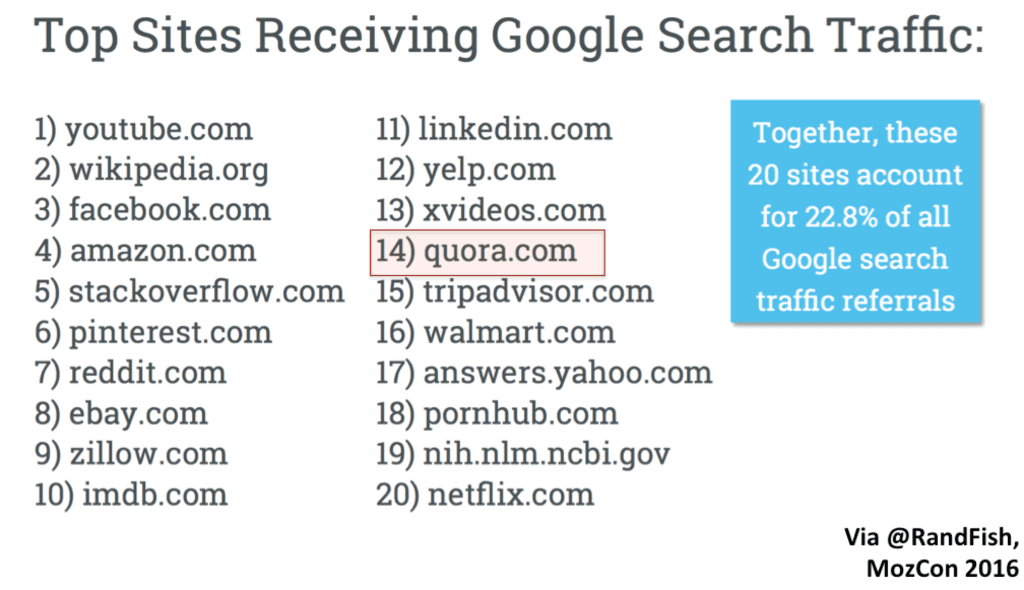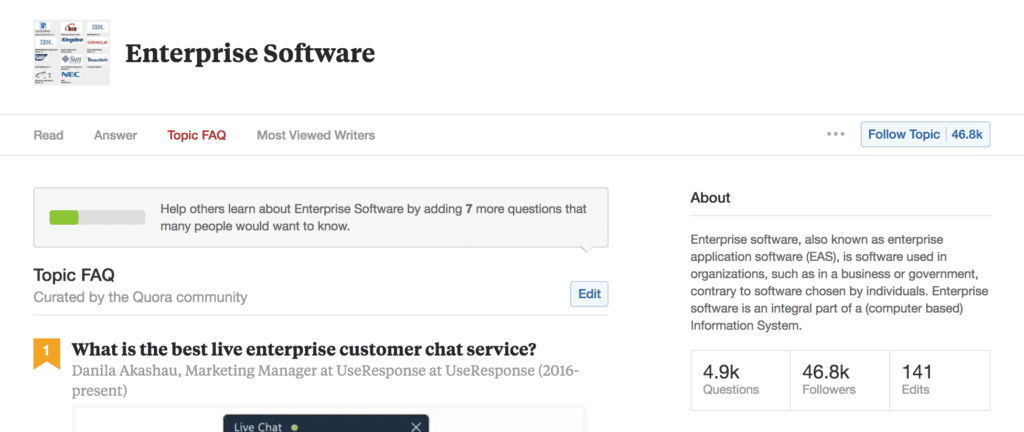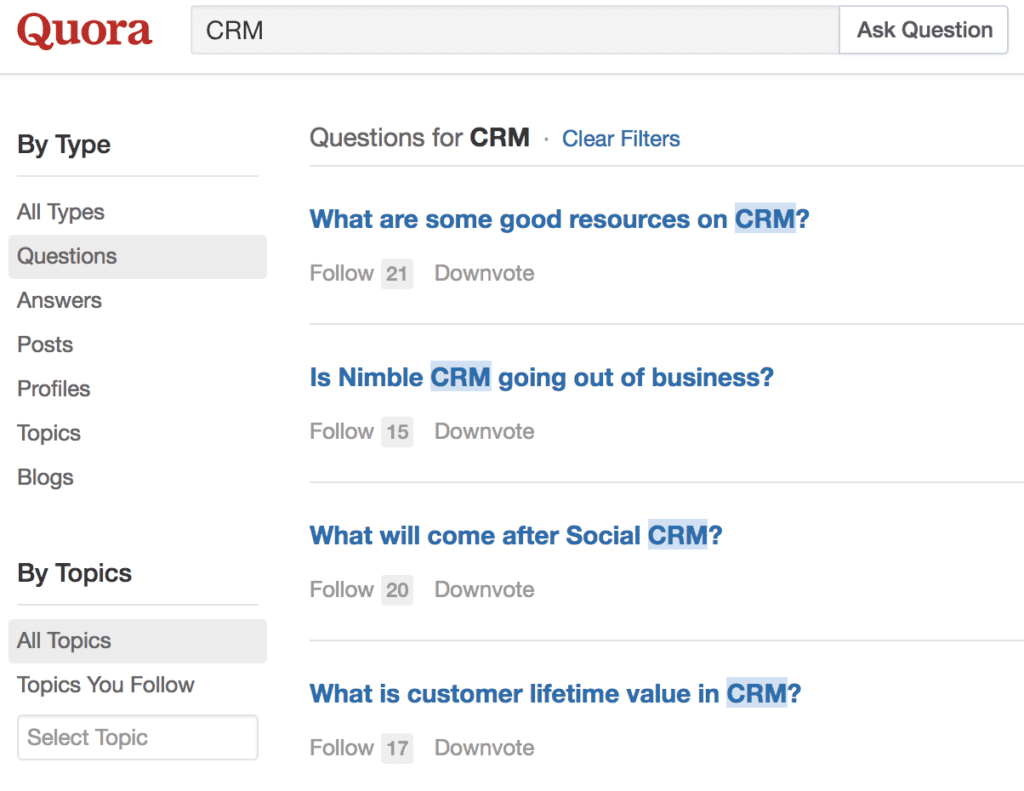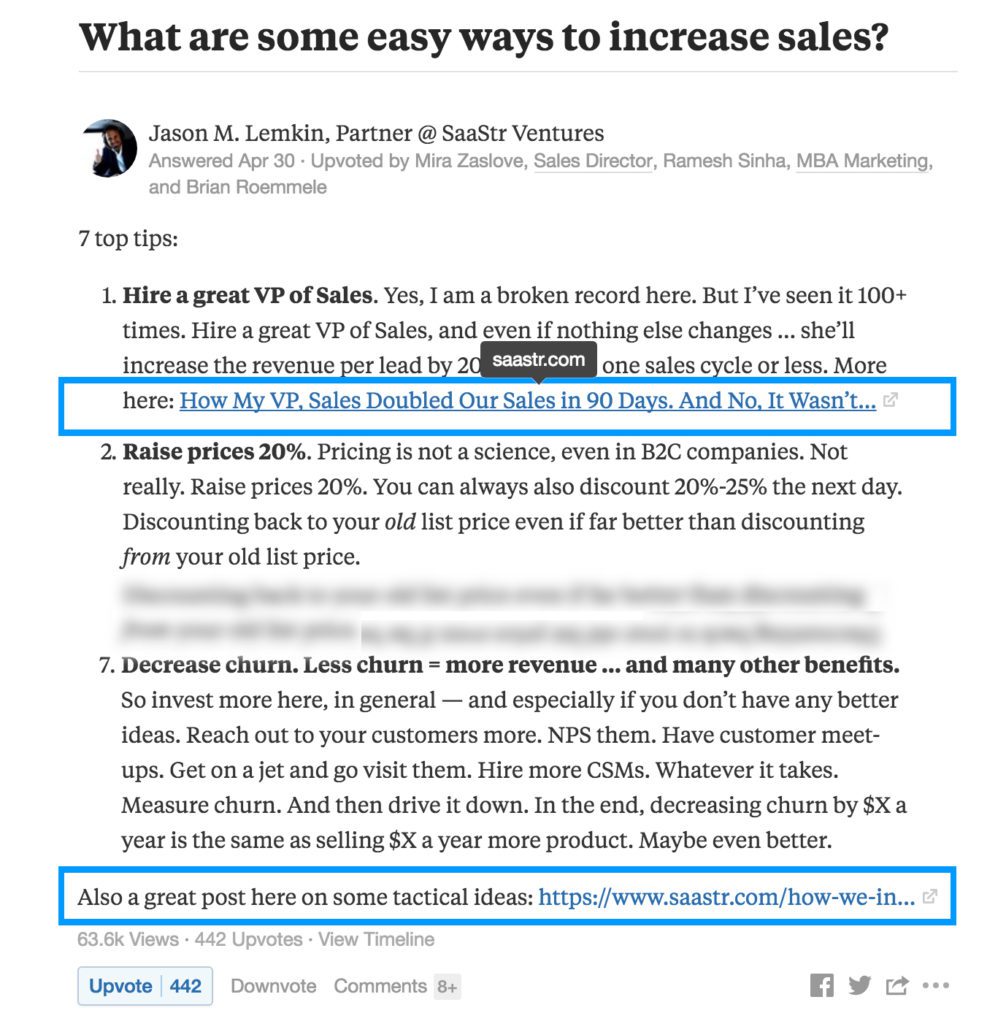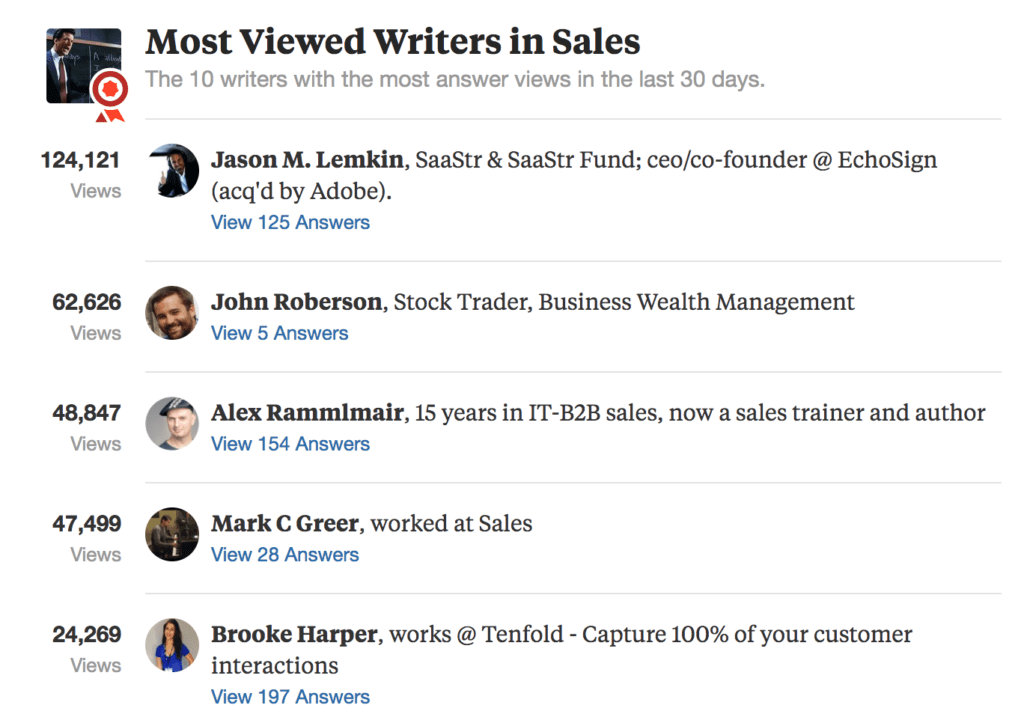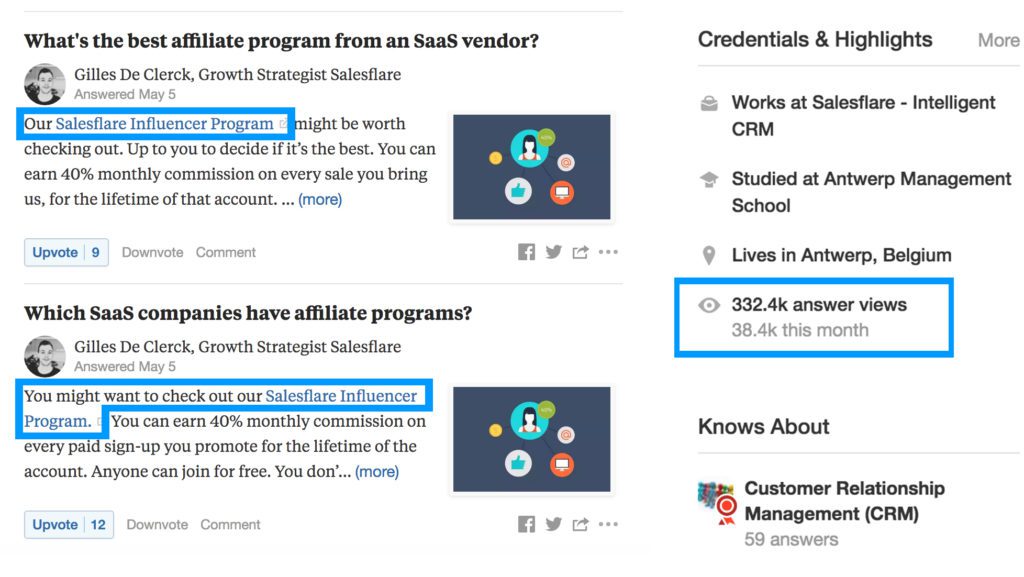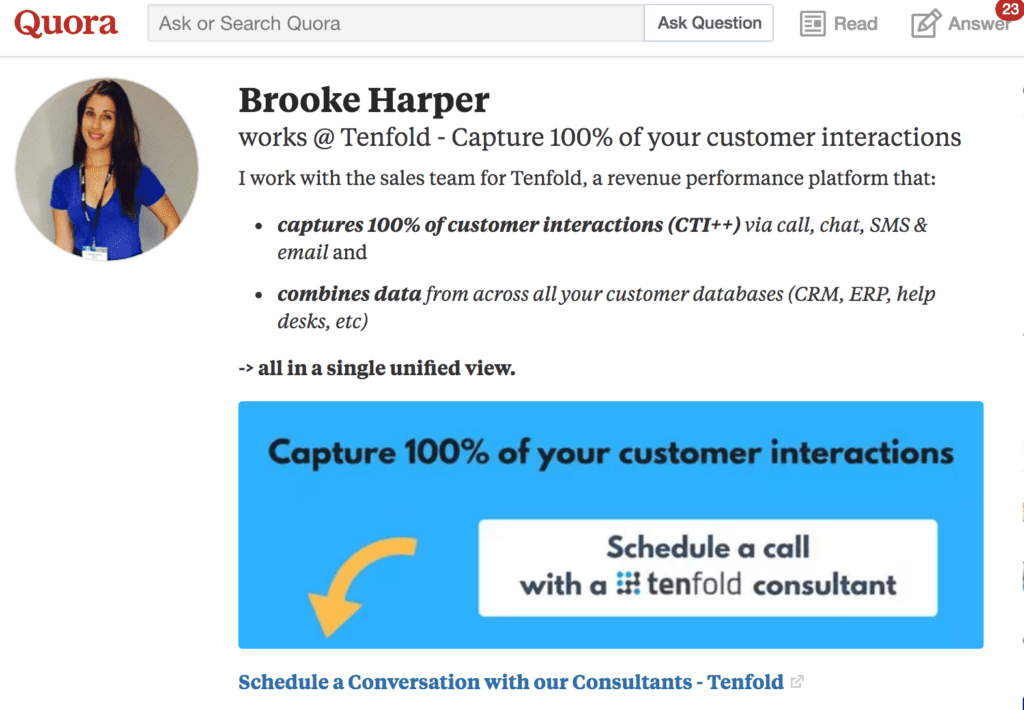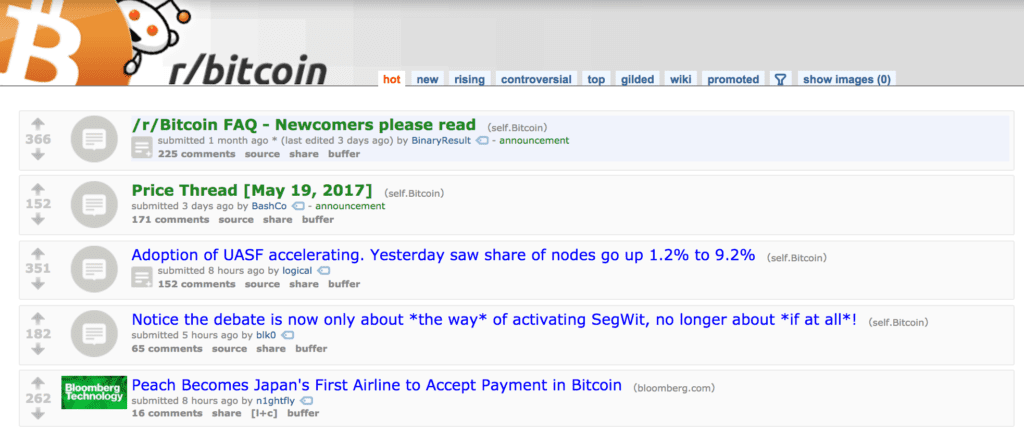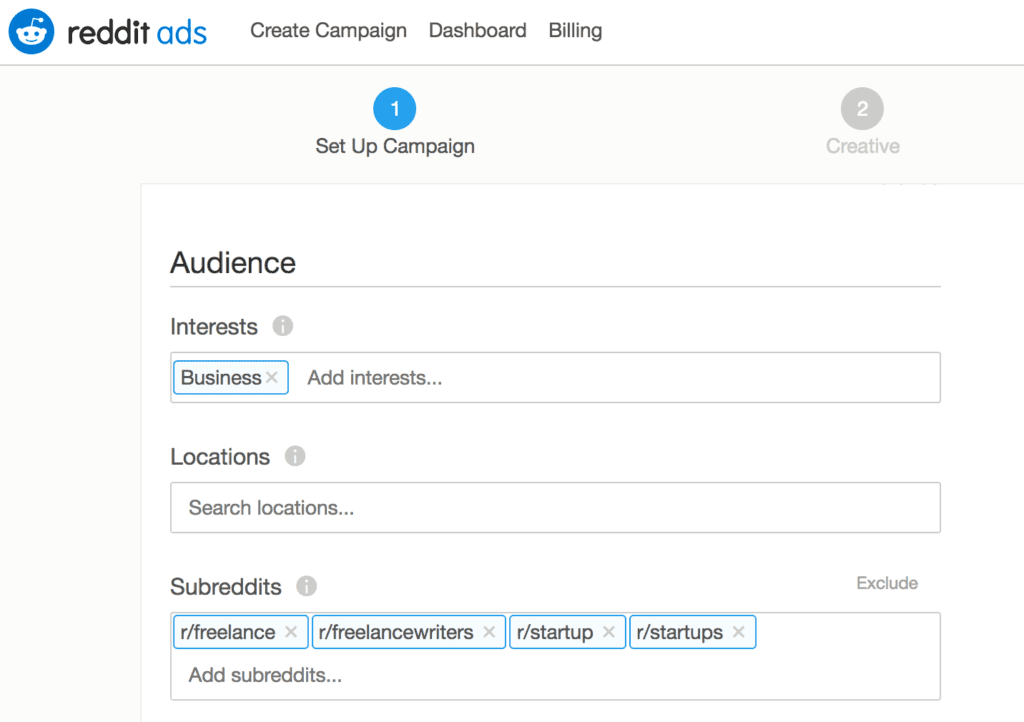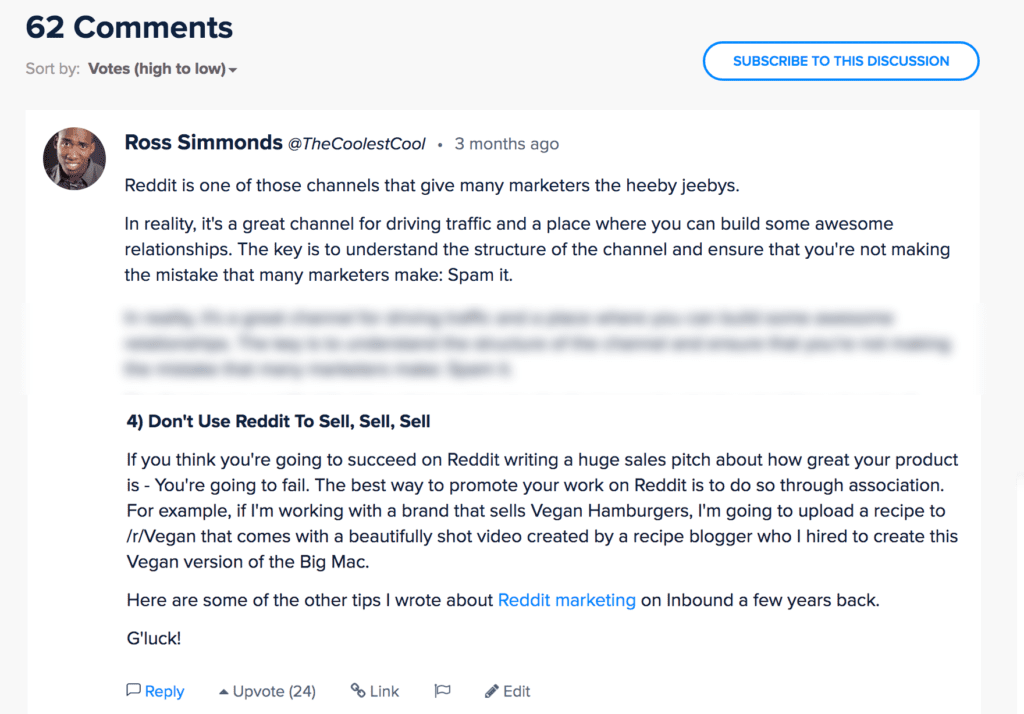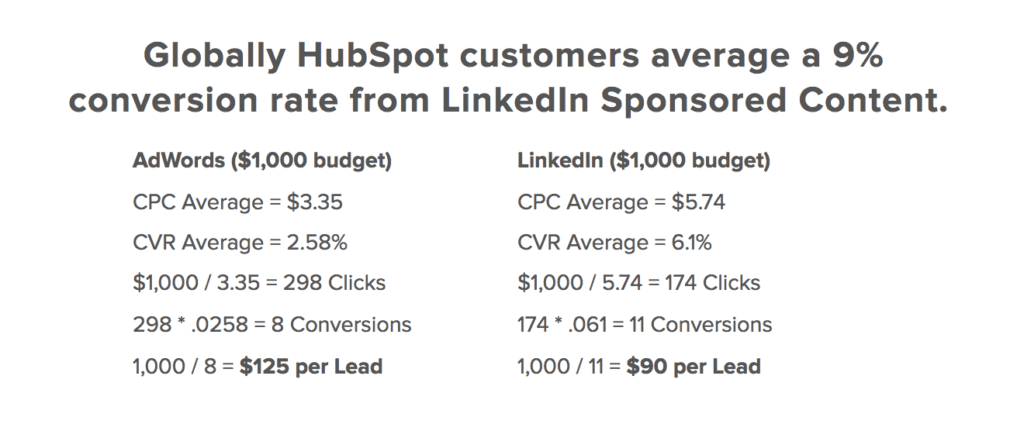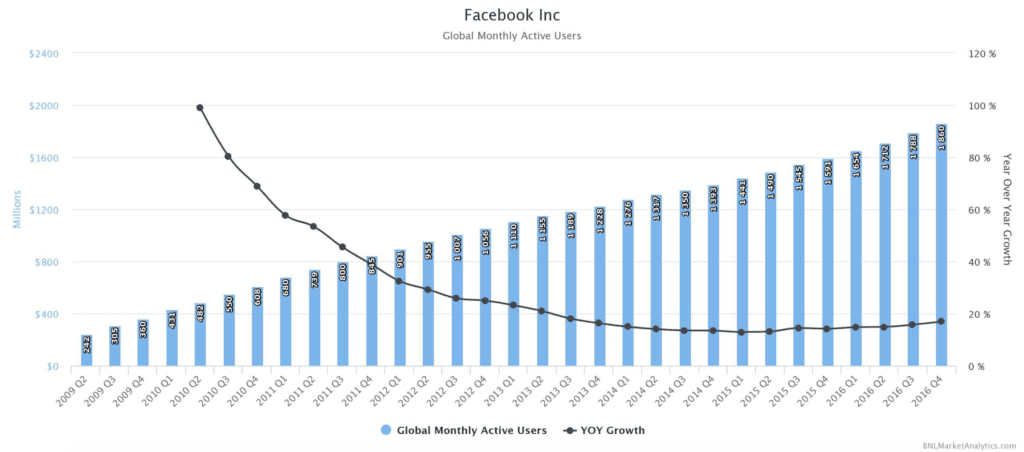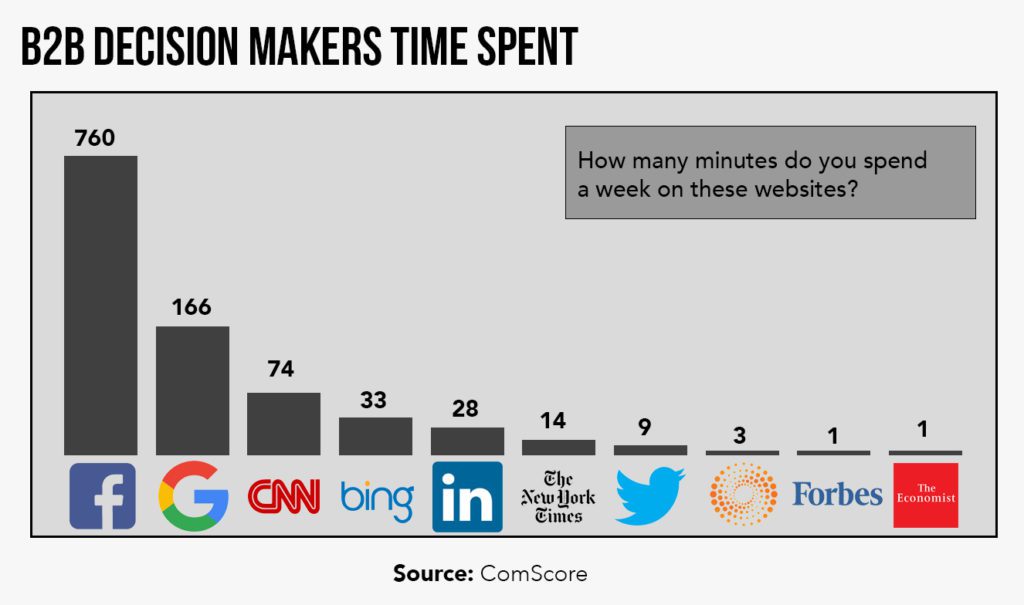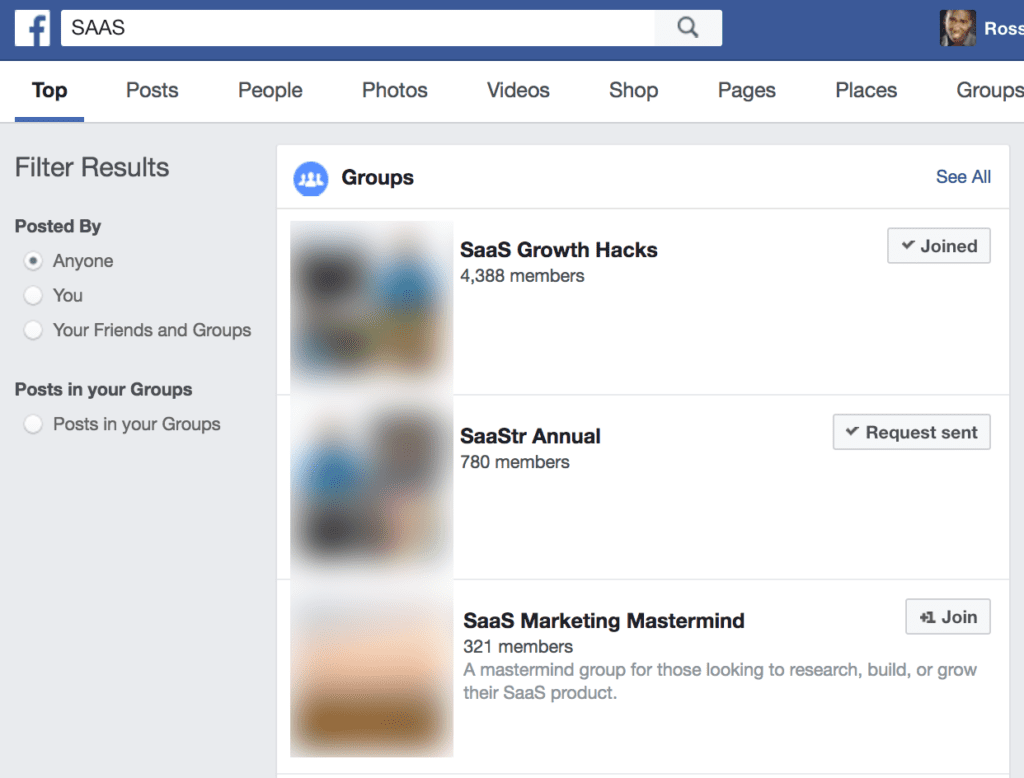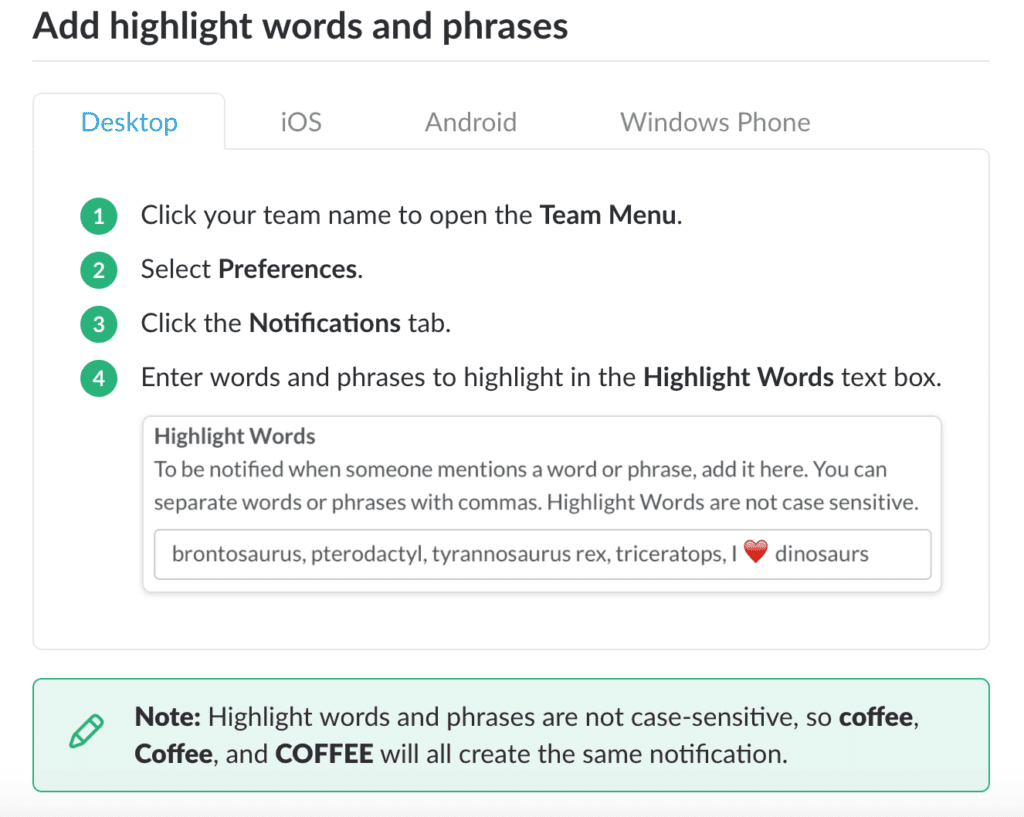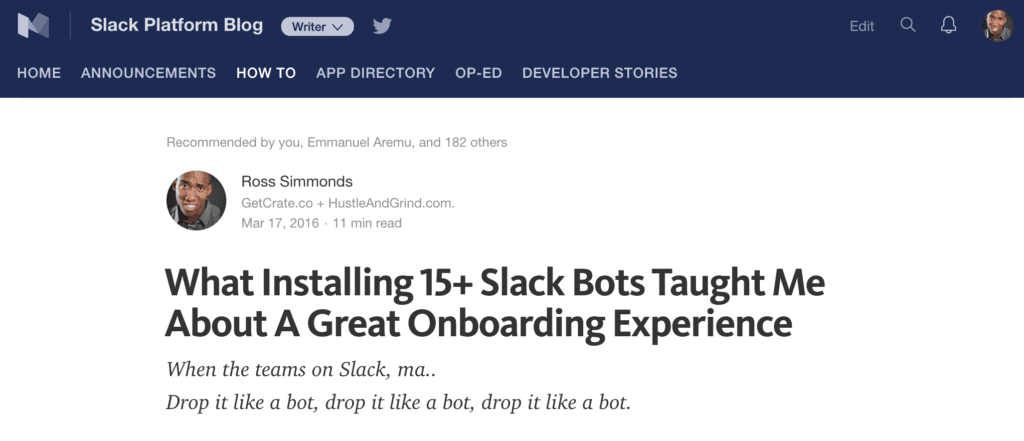How many times have you seen a variation of this idea?
Email marketing is 40 times more effective than Facebook and Twitter combined.
If you’re reading this post and you work in B2B marketing, probably a lot. Articles, webinars, blog posts, even paid courses—they’re all preaching the value of acquiring email addresses and using them to sell your product or service when it comes to B2B content marketing.
We get it.
Emails are important. Everyone wants your email, and you want the email of every potential lead.
I’ve got good news and bad news.
Unfortunately, it’s becoming harder and more expensive than ever to acquire the email of a potential lead. In fact, research by HubSpot indicates that 64% of B2B marketers believe their email strategy was successful in 2021.
As of May 2017, here’s what you’re up against in the marketing technology space alone:
How insane is that?
If you think marketing in the B2B space was hard before, trust me when I say things are about to get even harder in the months (and years) to come—I’m talking third-year-physics hard.
But here’s the good news: Even though there are thousands of these marketing tech companies cluttering the space, there are still opportunities for brands to capture leads and generate results through online marketing—opportunities that are being overlooked because the industry is chasing the shiny new thing rather than embracing strategies that are underrated and unsexy, but effective.
Some channels and efforts continue to offer B2B brands the chance to generate thousands of leads a day.
How?
Over the last few weeks, I’ve been compiling some of the best tactics I’ve seen and implemented with B2B brands looking to capture emails. And I’ve been reviewing the email acquisition strategies of hundreds of B2B brands and researching email marketing statistics to better understand how they’re navigating (or getting buried in) this competitive space. And the most interesting insight I’ve gleaned is this:
Most B2B brands are solely focused on generating emails through their own site using newsletter sign-ups and calls to action on blog posts and ebooks.
Most brands are actually ignoring the strategies and tactics I’m going to share in this blog post, although I’m willing to bet that investing in these ideas could have a huge impact on their monthly results.
It’s really a shame … which is why I’ve also created a PDF version of this blog post as a B2B content marketing guide so you can share it with your colleagues and peers.
In this guide, you’ll learn how to create content that B2B customers want to download and how to distribute those resources via the right channels to reach your audience. The PDF version contains all the strategies I’ve shared below, plus two bonus tips:
Download The Ultimate B2B Marketing Guide Here
Share Value & Resources Through Quora Answers
If you’ve ever asked Siri or Alexa a complex question, it’s possible you were met with:
I’m sorry, I didn’t quite get that.
The question-and-answer site Quora has spent the last few years collecting insights and information that could eventually fill in those gaps. After growing to more than 190 million monthly users, the app raised $85 million from investors, pushing its valuation to nearly $2 billion.
But that’s not the only interesting thing about Quora. What’s also interesting is the amount of traffic the site is getting every single day from Google.
People are going directly from Google to Quora to find answers to their questions.
For B2B marketers, Quora offers a great opportunity to inject your brand and lead magnets into the conversation and drive real results for your business. Just to give you an idea of the potential reach: The Enterprise Software topic has more than 46,800 followers subscribed to receive updates and notifications when new answers are published.
Quora is filled with questions that range from simple definitions to complex comparisons or insider information. To identify questions that are relevant to you, conduct a search in the Quora search bar using keywords that your audience would likely use. For example, if you’re selling sales software or services, you might want to search for CRM:
As you review the results, look for questions where you know you can deliver value. This is an important point because too many marketers make the mistake of going in to these conversations solely trying to sell rather than giving the community insightful, valuable answers.
A great example of someone adding value to the conversation while still driving results for their business is Jason Lemkin of SaaStr Ventures. His Quora efforts are worth reading and emulating. For instance, when the community asks, What are some easy ways to increase sales? he provides this valuable and detailed answer:
The references to the SaaStr website are built into the answer but are not the focus. Weaving these articles into a helpful answer is a great way for Lemkin to drive more visits back to the SaaStr website and acquire verified email addresses for their newsletter.
You should also note that this answer has generated more than 63,000 total views! That’s huge.
Lemkin has embraced this idea of adding value on Quora through detailed answers to the point that he’s become one of the Most Viewed Writers In Sales. The top four writers had all generated more than 45,000 views on their content at the time of this post:
The more questions you answer on Quora, the better your chances of reaching potential leads. The key is to ensure that you’re delivering valuable insights in your answers and only plugging your products, lead magnets and resources when it’s appropriate.
Here’s another example of someone doing it right. Gilles De Clerck, growth strategist for a CRM software company, found multiple questions on Quora where people were looking for SaaS vendors that offered affiliate programs. Seeing this, he was able to join the conversation while promoting the influencer program offered by his company:
When De Clerck answered these questions, he didn’t use the same cut-and-paste answer for both. He offered different answers with the same goal of highlighting his company’s influencer program to an audience who’s squarely in their target market.
As you establish yourself as an authority on Quora, you also will see an increase in the number of people visiting your profile. Take advantage of this space—adding eye-catching calls to action is a great way to increase the number of visits to a landing page or lead magnet. This profile from Brooke Harper is an example of how to use your Quora profile as a channel for driving results:
As you can see, she’s using the bio section to encourage people to schedule a call with one of her company’s consultants. The same strategy can be used to tell people to download an ebook, try a new tool, sign up for a newsletter or check out your latest blog post.
Thoughtfully Participate & Engage in Industry Forums
No matter your industry, there’s probably a niche community (or two, or many) where your target audience hangs out.
People may think forums are dead, but in reality, they’re very much alive. Thousands of people from different industries visit online communities every day to have conversations with their peers, whether it’s in a health care forum or a marketing forum.
You can find these communities by conducting a search on Google or even Quora.
For B2B brands looking to connect with marketers, the most popular forums are Inbound.org and GrowthHackers.com. In the startup community, HackerNews and ProductHunt are both well-known communities for investors, founders and product people.
For other industries, you can rely on sites like Reddit or Stack Exchange to have subsections filled with people talking about their passions.
Take Stack Exchange for example. It’s a network of 150-plus Q&A communities including Stack Overflow, one of the most popular sites for asking and answering questions about software development. In 2015, Stack Exchange generated more than 100 million monthly visitors as people from around the world discussed biology…
Information security…
…mathematics, geographic information systems, UX, physics, electrical engineering, video production, motor vehicle repair, academia and much more.
Like Stack Exchange, Reddit offers a vast variety of subjects for people to discuss in designated sections of the site. These niche communities are called Subreddits, which are essentially groups of passionate people coming together to engage on a particular topic.
For example, the Subreddit /r/Bitcoin is filled with Bitcoin fans, users and professionals talking about the cryptocurrency every single day:
While the Bitcoin Subreddit community is definitely active, it’s not the only Bitcoin community on the web.
A simple Google search for “Bitcoin forum” will show you a community that looks like something out of the ’90s but has almost a million members:
This is why it’s important to spend time looking for these communities and creating a list that you can rely on.
Once you’ve discovered communities relevant to your audience and your product, you can start distributing content that these communities will appreciate. You may be able to distribute this content using paid media efforts, or you can always place yourself in the community as a member.
On Reddit, you have the ability to run advertisements that directly target specific Subreddits. For example, if you’re looking to acquire leads that are primarily freelancers, target freelancing-related Subreddits using Reddit advertising and deliver a resource that you know would be of interest:
If you’re nervous about using Reddit as a marketing channel because of the potential backlash from users, turn off the comments on your ad. (I’d hope you would create content your audience would actually want, but if you’re nervous, that’s an option to save face.)
Just as you want to add value on a Q&A site like Quora, you want to add value when you contribute to a forum. When someone recently asked, Do you have any advice for a new Reddit user?, I jumped into the dialog and offered as much insight as I could while also referencing a blog post I wrote on the subject:
The answer received more upvotes than 60 other comments in the thread.
When you add value, people don’t care if you reference your own material. The key is to ensure that the content you’re sharing will improve the lives of the people reading it.
Utilize The Paid & Earned Marketing Opportunities On LinkedIn
LinkedIn isn’t just a website for uploading your CV and hoping to get a job. The site can be used as a channel to build and nurture professional relationships. It can also be used as a marketing channel for B2B brands looking to connect with their target audience through what is still considered the preferred social network for business.
LinkedIn offers a handful of paid media efforts that brands can leverage to get their story in front of their target audience:
The folks at HubSpot found that the conversion rate from LinkedIn ads is quite impressive:
LinkedIn also recently launched their new LinkedIn Forms – A way to capture emails & leads without any landing pages:
While these are great tactics for generating B2B leads, paid media efforts are not the end all, be all for LinkedIn marketing.
One of the most powerful elements of LinkedIn is the social aspect: the connections you’ve made and the relationships you have with those people. The more people you’re connected to on LinkedIn, the better the chances that your content will reach people outside your network.
That’s not to say you should go out and start adding everyone to LinkedIn!
Not at all.
What I’m suggesting is that you start strengthening your relationships with your current connections by engaging with their content and being more intentional about creating your own content for LinkedIn. That means writing articles, sharing updates, contributing to groups and taking the time to engage and add value. As you increase your activity on LinkedIn, more people will begin viewing and following your account to stay in the loop on whatever content you’re sharing or publishing.
Use Relevant Facebook Groups To Find Potential Leads
With over 1.5 billion active monthly users, Facebook is the undisputed champion when it comes to social networks.
And if that’s not enough to convince you that Facebook is a great place for B2B, did you know that it’s also the channel where B2B decision makers spend the majority of their time online each month?
Do I have your attention now?
Good.
Because Facebook is not just a place where millennials are sharing baby pictures, selfies, cat videos and fake news.
It’s a channel where great B2B marketers are building an audience, generating leads and closing deals in Facebook messenger. A lot of businesspeople don’t realize that Facebook is quickly becoming a channel for both professional and personal connections. People are selling products and services, collaborating, running webinars, hosting events and staying in touch directly through Facebook.
Yet, so many B2B marketers still turn their noses up at the site as if it’s not worth their time.
One of the most underrated opportunities on Facebook is the world of Facebook Groups. They’re similar to the online communities described earlier except there’s no anonymity—and, of course, they live within the walls of Facebook.
For B2B Brands, there are two obvious strategies that can work well for generating leads in Facebook Groups:
- Create or join a Facebook Group for an upcoming corporate event or conference that you know your audience will be attending
- Create or join a Facebook Group that is a watering hole for your target audience to network and discuss industry topics
The team at Moz have a year-round Facebook Group dedicated to their conference, MozCon:
Over the course of the year, the Moz team uses the group as a channel for keeping people in the loop on ticket sales, speaker announcements and other happenings related to the event.
Creating a group around your own event gives you a platform to share your content with people who are clearly interested in what you have to offer. But you don’t have to host your own group to benefit—for a B2B Brand, participating in a group for someone else’s event can also be a great way to get your content in front of your audience. Here’s an example of a lead magnet (a quiz!) shared in the MozCon group:
Industry-centric Facebook groups are an opportunity for B2B marketers to build their email list as well. Before setting off to found your own group, research the existing groups on Facebook to ensure that you’re not adding more work to your plate than necessary. If you’re targeting SaaS founders, you might want to start by doing a quick search for SaaS groups:
The SaaS Growth Hacks group already has more than 4,300 members. If that’s your target audience, it’s very likely that at least a handful of the people in this group would be interested in your brand.
If you create your own group, it’s important to ensure that the group name contains a keyword your audience is likely to search for and that you put a bit of promotion behind the group to get it started.
Once you’ve launched your Facebook group, you’ll need to make sure that the community stays active and that you’re consistently sharing content in the group to keep people engaged. I recommend using Buffer as a scheduling tool so you don’t have to constantly remind yourself to post—you can upload a handful of posts in advance, and your posts will be distributed based on a preset schedule.
As you build your Facebook group or establish stronger relationships in existing ones, take the time to share content that is likely to generate leads. Furthermore, embrace the idea of using Facebook as a channel where you can have both professional and personal relationships. Add people from your Facebook group as friends and establish a closer connection.
Create A Slack Channel For Your Target Audience
As of January 2017, Slack has more than 5 million daily active users.
If you haven’t heard of Slack, today is your lucky day. It’s an honour to be the person to introduce you to this great service.
Slack is a messaging app for teams and groups that share a similar interest. And I have a confession to make.
I’m a Slack-aholic.
I’m a member of 15 different Slack channels. Some of them are filled with people talking about tech, some of them are built specifically for my projects, some are for products I use and some are simply general interest groups.
For B2B brands, identifying a Slack group that is filled with your target audience can be a great way to generate leads. Not only will joining give you a chance to communicate broadly with your audience, it will also enable you to communicate privately through direct messages.
As you join Slack channels with large memberships, it’s easy to get lost in all the chatter and noise. I’m in a few Slack teams where there are hundreds of messages shared every single day. That’s a lot of content flying around, and some of these conversations last for hours! If you’re like me and don’t have the time to constantly be wired in to these conversations, Slack’s Highlight Words feature is a dream:
Highlight Words allow you to set up settings for specific Slack Teams to give you a notification when a certain word is shared in the group.
For example, if you’re running the marketing for a CRM software company, you can set up notifications for keywords like: CRM Software, Your Competitors Name, Your Brands Name and Sales Software. Whenever someone in that Slack Channel mentions those words, you’ll be notified and immediately have a chance to become a part of the discussion.
Distribute Your Lead Magnets On Channels Like Twitter & Facebook
This should go without saying but here we are.
Create & distribute lead magnets on both Twitter & Facebook!
You would be surprised how many brands I’ve seen who truly believe in the idea that if they build it, the people will come. Unfortunately folks, this isn’t the field of dreams and you really do need to let people know when you’re publishing an ebook or have released a new report.
B2B Marketers are also the biggest offenders of not promoting their content AFTER they share it once. Yes… It’s completely okay to share the same eBook you shared on Twitter at 8AM again at 3PM. The people who are on Twitter at 8AM might not be the same people who are on Twitter at 3PM.
So embrace the idea of sharing your content multiple times over the course of a week!
Create Joint Partnerships With Other B2B Brands
Like Doritos and Taco Bell, the best B2B partnerships are a win-win for both brands and customers.
Two brands promoting a webinar is better than one. If you’re using a webinar or ebook as a tool to generate more B2B Leads, think about potential opportunities to partner with another brand. By collaborating on the content and sharing the lead list, both companies will be incentivized to promote the content and make the campaign a success.
The folks at BuzzStream (which is one of the best PR/SEO email outreach tools on the market) have embraced a great content partnership approach with influential marketers in the industry. Their joint webinars are beneficial for both the marketers and BuzzStream as they gain exposure to each other’s audiences:
If you’re a smaller brand in the B2B space, you’ll need to determine your strength in a partnership. If you don’t have a significant following or existing mailing list, it’s going to be on you to deliver some other type of value to the engagement. One great way that early-stage B2B brands can position themselves well for content partnerships is to do the heavy lifting in creating the content or conducting research. If you offer to make the bigger brand’s job easier, they’ll be more likely to agree to the partnership.
Repurpose Your Content & Distribute Through Medium Publications
One of the goals for B2B brands creating content is obviously to get that content in front of the right people. If you’re already using your SaaS marketing blog as a gateway to drive readers to download an ebook, schedule a demo or sign up for a webinar, then repurposing content can be a great way to give your content more life.
Take your time to choose the right content to repurpose. The pieces should be well-performing, evergreen articles or guides, for example, or new, relevant content along with pages that draw the most traffic. You can identify the latter by using SE Ranking competitor analysis tool, which will help you only repurpose suitable articles. When analyzing, pay attention to pages with the highest organic traffic or pages already ranking for keywords with the highest search volume.
Medium.com is a blogging platform where thousands of people upload and share their thoughts every single day. It’s primarily a place for insightful blog posts that touch on a wide variety of topics. Some brands have gone so far as to scrap the idea of hosting a blog on their own site and instead make Medium their default blogging space.
For B2B brands, Medium offers the chance to get your story in front of a relevant audience by contributing to content feeds on topics related to your business. I’m not recommending that you scrap the blog on your website entirely, but I am recommending that you consider using Medium as a distribution channel. Not only does Medium distribute your content to people who follow you on social media, it also allows the content to spread based on the topics you tag the content with.
And that’s great. But here’s the thing:
The best distribution channels are existing publications.
A Medium publication is a collection of stories centered around a specific subject or theme—kind of like a newspaper or magazine. At this time, I’m a writer for five publications and an editor for three. As people subscribe to their favorite publications, their newsfeeds are filled with content they (ideally) want to read.
Your goal should be to establish relationships with people who run popular publications and convince them to let you contribute. My most popular posts on Medium were published to third-party publications that have a significant following. Here’s one submission I shared to Chatbots Magazine:
And another I published to the Slack Platform blog:
Both got hundreds of views and resulted in new relationships, email subscribers and leads.
Include A CTA To Your Newsletter In Your Email Signature
This is pretty straightforward:
Use your email signature for content promotion.
Don’t be shy. Update your email signature to include a simple call to action telling people to download a guide, sign up for a webinar or schedule a call with your sales rep. As you’re nurturing a relationship with a potential lead, you might send them an email with a resource, new research or a proposal. If they like it (or don’t), they may forward your email to other people in their network or company to review. As your email is passed along, a signature that drives people to download your content is an easy opportunity to keep building your list.
Wrapping Things Up
As you’ve read through this guide, you might be thinking:
Whoa, that’s a lot of work!
Darn tootin’ it is.
Thomas Edison once said:
“Opportunity is missed by most people because it is dressed in overalls and looks like work.”
The same logic applies when it comes to marketing: Too many marketers don’t want to put in the work. You need to invest time and energy in discovering and understanding the channels your audience is using, and then invest more time and energy in actually unlocking those channels as avenues to generate leads, schedule demos and close deals.
Even if you’re committed to putting in the hard work associated with B2B marketing in today’s landscape, the going will be tough. As I pointed out earlier, you’re competing with thousands of other brands trying to get the attention of your prospects and current customers. If you want to win the attention of your audience, you’ll need to roll up your sleeves and ensure that your team is equipped with the insights they need to execute.
And, of course, if you liked what you read above, don’t keep it to yourself. Pass this B2B content marketing guide along to others on your team or in the industry by tweeting it out or posting it on Facebook—it means a lot and I really appreciate it.

